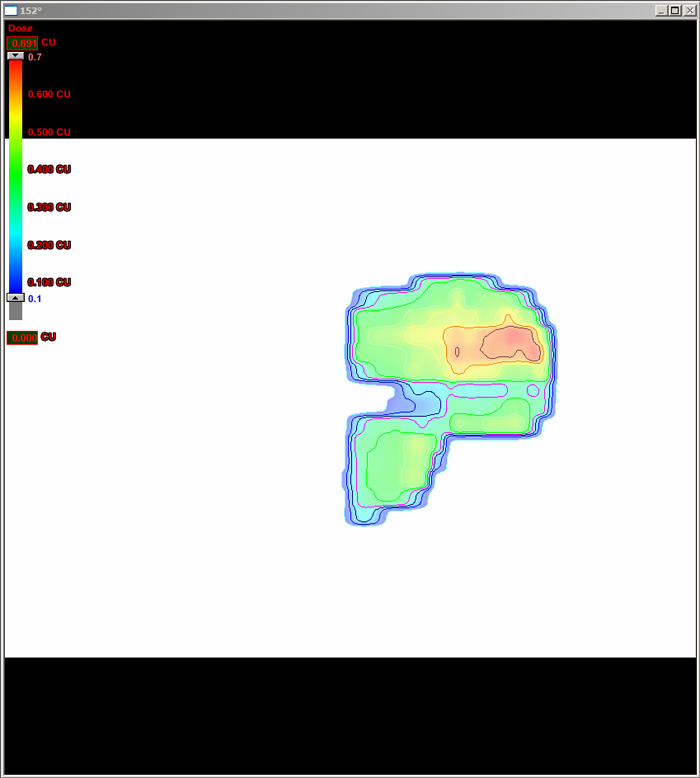An IMRT plan in Eclipse shall be "verified" (dosimetrically) before the first patient treatment. The task is to check both the relative distribution and the absolute intensity of each IMRT field (the portal dose prediction does not work for non-IMRT fields). This is what many people consider as pre-treatment verification. Usually, some two-dimensional dosimetry system (2D array, film etc.) is used for this.
The idea of Portal Dosimetry is the following: for each IMRT field, a predicted image is generated in Eclipse. Eclipse calculates how a port image should "look like" in terms of absolute pixel values. For the calculation, the same Dynamic MLC sequence, jaw setting, energy, dose rate and MU as the original field are used. The user can choose the Gantry and Collimator angle and some other parameters which have no impact on dosimetry. The Focus Detector distance during image calculation and image acquisition has to be the same as during the absolute calibration of the imager for a 10x10 field.
This "verification plan" ( ![]() ) is subsequently treated via the ARIA system just like any clinical plan (
) is subsequently treated via the ARIA system just like any clinical plan ( ![]() ). During delivery on the linac, integrated images are acquired with the calibrated port imager.
). During delivery on the linac, integrated images are acquired with the calibrated port imager.
The measured images ( ![]() +
+ ![]() ) are then compared to the predicted images (
) are then compared to the predicted images ( ![]() , see example image below) in a dedicated workspace of the ARIA system. The Gamma index concept can be used for quantifying the results, and profiles can be measured. The assumption now is: if there is agreement between the predicted and the measured images, the IMRT plan is dosimetrically correct.
, see example image below) in a dedicated workspace of the ARIA system. The Gamma index concept can be used for quantifying the results, and profiles can be measured. The assumption now is: if there is agreement between the predicted and the measured images, the IMRT plan is dosimetrically correct.
